Down milling vs. up milling
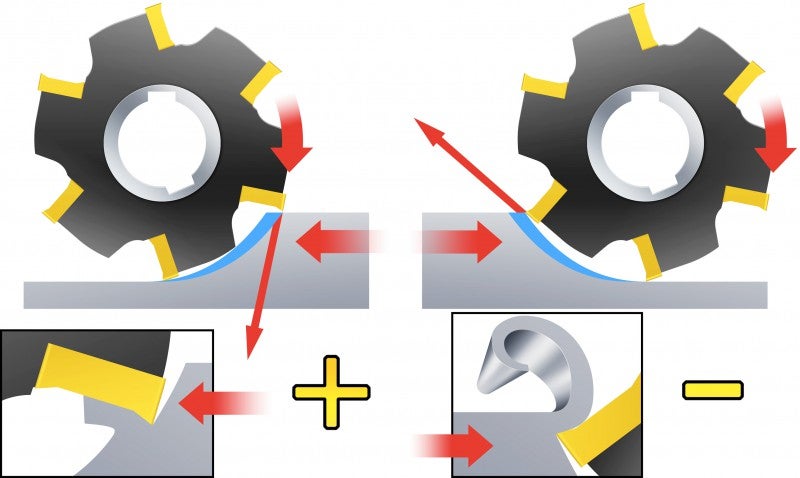
Each time a milling edge enters a cut, it is subjected to a shock load. The right type of contact between the edge and material at the entry and the exit of a cut must be considered for successful milling. In a milling operation, the workpiece is fed either with or against the direction of the cutter rotation which affects the start and finish of the cut and if down milling or up milling method is used.
The golden rule in milling – Thick to thin
When milling, you always need to consider how the chips are being formed. It is the cutter position that forms the chips and you should always aim for thick chips on entry and thin chips on exit to ensure a stable milling process.
Remember the golden rule in milling – thick to thin – to ensure the lowest chip thickness possible when exiting a cut.
Down milling
In down milling (climb milling), the cutting tool is fed with the direction of rotation. Down milling is always the preferred method wherever the machine tool, fixture and workpiece will allow.
In peripheral down milling, the chip thickness will decrease from the start of cut, gradually reaching zero at the end of cut. This prevents the edge from rubbing and burnishing against the surface before engaging in the cut.
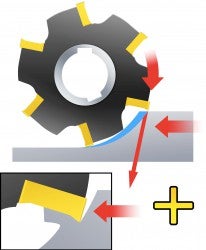
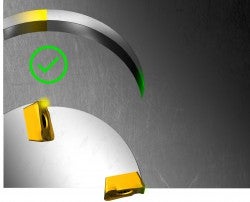
The large chip thickness is advantageous, and the cutting forces tend to pull the workpiece into the cutter, holding the cutting edge in the cut.
However, as the cutter tends to be pulled into the workpiece, the machine needs to handle the table-feed play using back-lash elimination. If the tool pulls into the workpiece, feed is unintentionally increased which can lead to excessive chip thickness and edge breaking. Consider using up milling in such cases.
Up milling
In up milling (conventional milling), the feed direction of the cutting tool is opposite to its rotation.
The chip thickness starts at zero and increases toward the end of the cut. The cutting edge has to be forced into the cut, creating a rubbing or burnishing effect due to friction, high temperatures and, often times, contact with a work-hardened surface caused by the preceding edge. All this reduces the tool life.
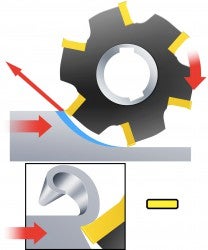
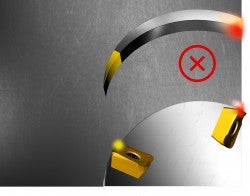
The thick chips and higher temperature at the exit from cut will cause high tensile stresses that will reduce tool life and often result in rapid edge failure. It can also cause chips to stick or weld to the cutting edge, which will then carry them around to the start of the next cut, or cause momentary edge frittering.
Cutting forces tend to push the cutter and workpiece away from each other and radial forces will tend to lift the workpiece from the table.
Up milling may be advantageous when large variations in working allowance occur. It is also recommended to use up milling when using ceramic inserts in heat resistant alloys, because ceramics are sensitive to impact at workpiece entry.
Workpiece fixtures
Feed direction of the tool places different demands on the workpiece fixture. During up milling, it should resist lifting forces. During down milling, it should resist pulling forces.


